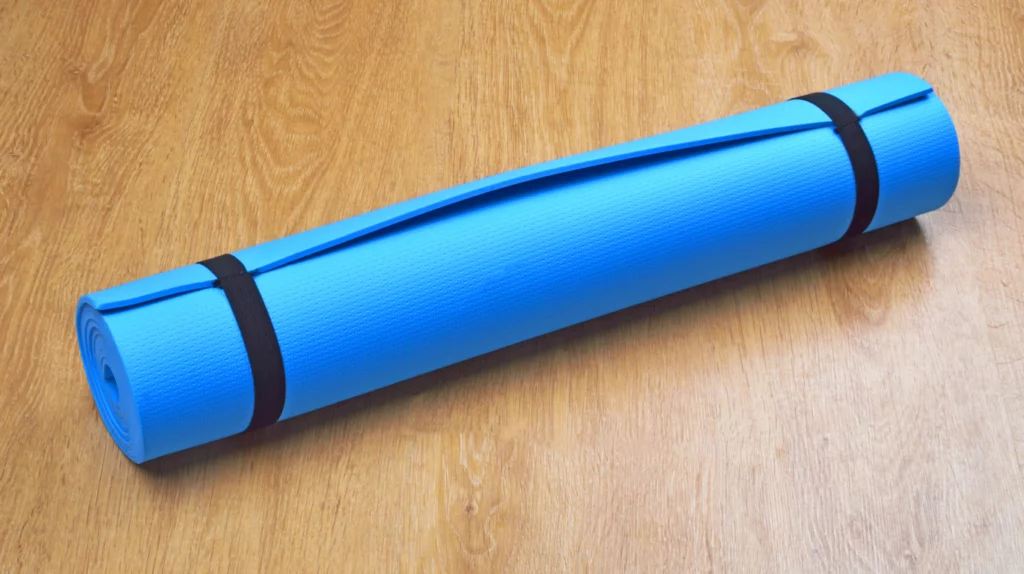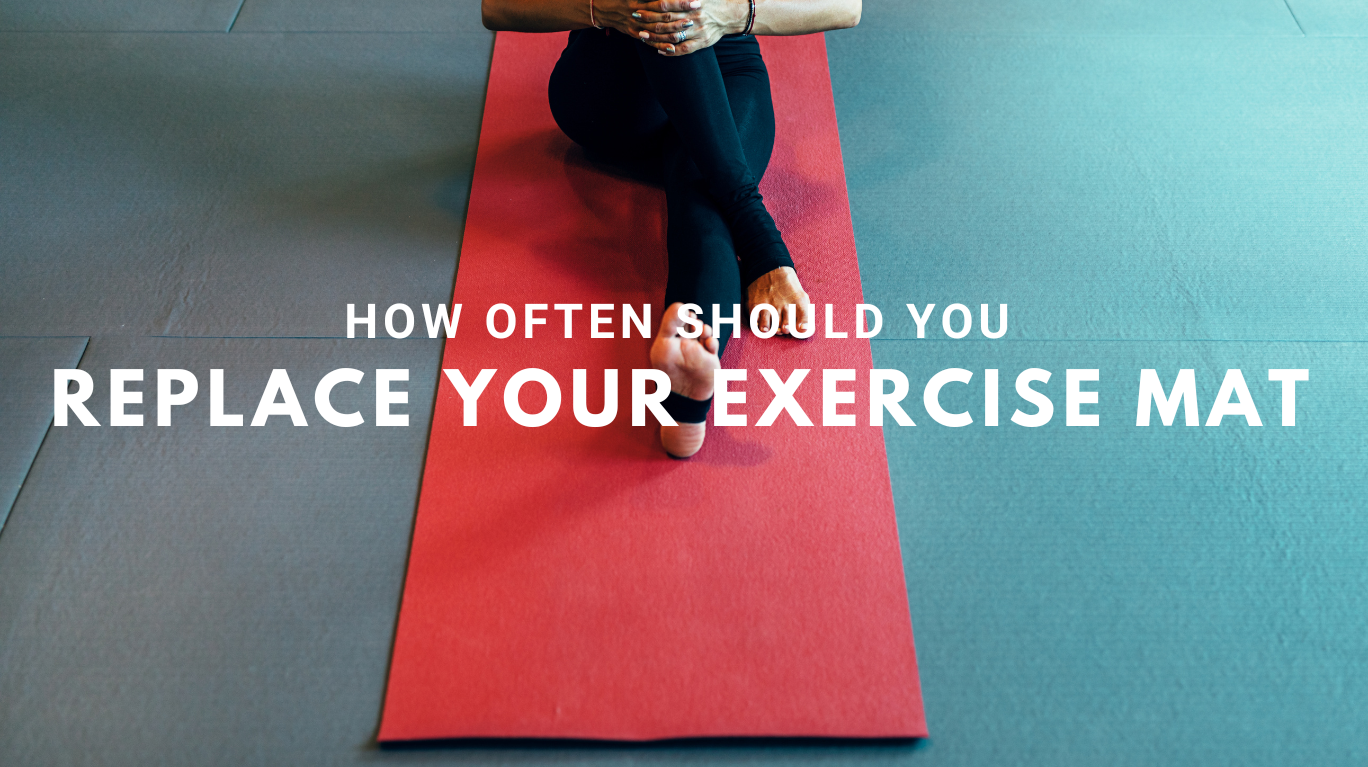If you’re like most fitness freaks, you probably use your exercise mat every day for your workouts. But have you ever wondered how often should you replace your exercise mat? You might think that as long as it’s not torn or dirty, it’s good to go. But the truth is, your exercise mat can harbor bacteria, fungi, and viruses that can cause infections and diseases.
Not to mention, it can lose its cushioning and grip over time, making your exercises less comfortable and effective. So how do you know when to replace your exercise mat? In this blog post, we’ll show you the signs that indicate your exercise mat needs a replacement, and how to choose a new one that suits your needs and preferences.
So, let’s dive in and discover the secret to a top-notch exercise experience!
When to Replace Your Exercise Mat? Look Out for These 5 Common Signs
A worn-out exercise mat can negatively impact your performance, compromise your safety, and play havoc with your health in ways you might never have contemplated. So, how can you tell if your exercise mat is ready to be replaced? These are the five common signs to watch for:
1. Loss of grip or traction
An exercise mat’s top priority is to keep you firmly rooted through your workouts. If your mat starts having a slip-slide aspect to it, it’s time to consider a replacement. Loss of grip or traction can result in unwanted injuries, disrupting your fitness journey.
2. Thinning or tearing of the mat material
The padding in your mat does more than provide comfort; it plays a key role in cushioning your body against the hard floor. Over time, this mat material may thin or tear, reducing the mat’s effectiveness. A worn-out mat could put undue stress on your joints and muscles.
3. Pilling or flaking of the surface
If your mat shows signs of pilling or flaking, it’s a clear indication that the material is deteriorating. Apart from being an eyesore during your workouts, a shedding mat can also distract you.
4. Fading or staining of the color
Sometimes, the first signs of wear and tear show up as a faded color or stubborn stains. While a little discoloration may not affect your workout, it’s often a hint of more significant underlying damage.
5. Odor or bacteria buildup
If your exercise mat emits a persistent, unpleasant odor, it’s a red flag. The odor often signifies the presence of bacteria, mold, or mildew. Regular cleaning may help temporarily, but if the smell persists, it’s a strong indication that your mat has reached the end of its life cycle.
Key Factors Determining How Long Your Exercise Mat Will Last
Several factors influencing the lifespan of your exercise mat are:
-
Type of Mat Material
The durability of your exercise mat varies vastly with the material it is made from. High-quality material like PVC may last longer, but it might not be the most eco-friendly choice.
-
Frequency of Use
The more regularly you use your mat, the quicker it will wear out. An exercise mat used daily may require replacement sooner than one used occasionally.
-
Maintenance and Cleaning Habits
Conscientious maintenance and cleaning habits can extend your exercise mat’s lifespan. Keep it clean, and it will serve you longer!
-
Storage Conditions
Keeping your mat in storage conditions that are too harsh, like high heat, can cause irreparable damage. Store it in a cool, dry place to keep it in tip-top shape for longer.
-
Climate and Environment
The climate where you use your exercise mat can also influence its lifespan. Humid conditions can cause mats to degrade and even accumulate mold. So avoid exposing it to harsh conditions whenever possible.
Top Tips for Extending the Lifespan of Your Exercise Mat

Proper care and maintenance can dramatically extend the lifespan of your exercise mat and keep it in good condition for longer. Here’s how:
- Regular cleaning with a disinfectant can keep bacteria, mold, and other pathogens at bay. Plus, it keeps your mat smelling fresh!
- If you roll your mat, remember not to keep it too tight, as this can cause creases. Also, keep it in a cool and dry location.
- Ensure to wipe off sweat and moisture after each workout to keep mold away.
- Too high or too low temperatures can damage the material of your mat. Aim for a mild environment.
- Unroll your mat carefully for each use, and roll it back up with gentle firmness. Avoid excessive pulling or stretching that might damage it.
How to Choose a New Exercise Mat
If you decide that it’s time to replace your exercise mat, you might wonder how to choose a new one that suits your needs and preferences. Choosing a new exercise mat isn’t just about replacing the old one; it’s an opportunity to upgrade your workout experience. Here are the factors to consider:
1. Size
Choose the size based on your height and the type of exercise you are planning to do. A too-small or too-large mat can affect your comfort and mobility. A good exercise mat should be long enough to accommodate your height and wide enough to allow you to move freely. The standard size for most exercise mats is 68 x 24 inches, but you can find larger or smaller sizes depending on your preference.
2. Thickness
The thickness of your exercise mat affects comfort and support. Thicker exercise mats are ideal for high-impact activities that require excellent padding. On the flip side, thinner mats are best for workouts that require balance like yoga. So choose thickness based on your needs as it’s about balancing comfort and efficiency.
3. Texture
A textured mat aids grip and could prevent slipping in sweat-intensive workouts. Opt for a texture that suits your workout needs. Some mats have a smooth surface, while others offer extra grip or cushioning.
4. Durability
A durable or long-lasting exercise mat is an investment. Check the material and construction to ensure your new mat will withstand your exercise routine. Prioritize this if your workout is regular and intense.
5. Eco-Friendliness
If environmental considerations are important to you, select a mat made from bio-degradable or recyclable materials, reducing your carbon footprint.
Conclusion
To wrap up, a well-maintained, high-quality exercise mat contributes significantly towards a safe, efficient, and enjoyable workout. Knowing how often to replace your exercise mat and what signs to look for can help you keep your exercise mat in good condition and get the best results from it. Mining out tips to extend its lifespan and selecting the perfect replacement can help you make the most of your exercise mat and your fitness goals. We hope this article has given you some useful information and advice on how to replace your exercise mat. So go ahead, and scrutinize your mat today. Spot deterioration? It’s opportunity time!
Common Queries
What is the lifespan of an exercise mat?
The lifespan of an exercise mat depends on the quality, material, usage, and care of the mat. Generally, exercise mats typically can last from 6 months to 1 or 3 years.
When is the best time to replace your mat?
Replace your exercise mat when it shows signs of wear and tear, like cracks, tears, thinning, or uneven cushioning. Moreover, if your mat starts to smell bad or has stains that cannot be removed by cleaning, you might need to replace it.
How durable is a rubber exercise mat?
Rubber exercise mats are quite durable and can last longer than foam mats if well-maintained. They are resistant to abrasion, impact, moisture, and heat. Plus, they can withstand heavy weights without denting or tearing.
What is the recommended cleaning frequency for the exercise mat?
Clean your exercise mat after each use or at least once a week to prevent dirt and bacteria buildup. Keeping it clean helps extend its lifespan.
What are the benefits of using an exercise mat?
Exercise mats provide cushioning, support, and hygiene during workouts. They protect your body and floor, making exercises more comfortable and safe.

